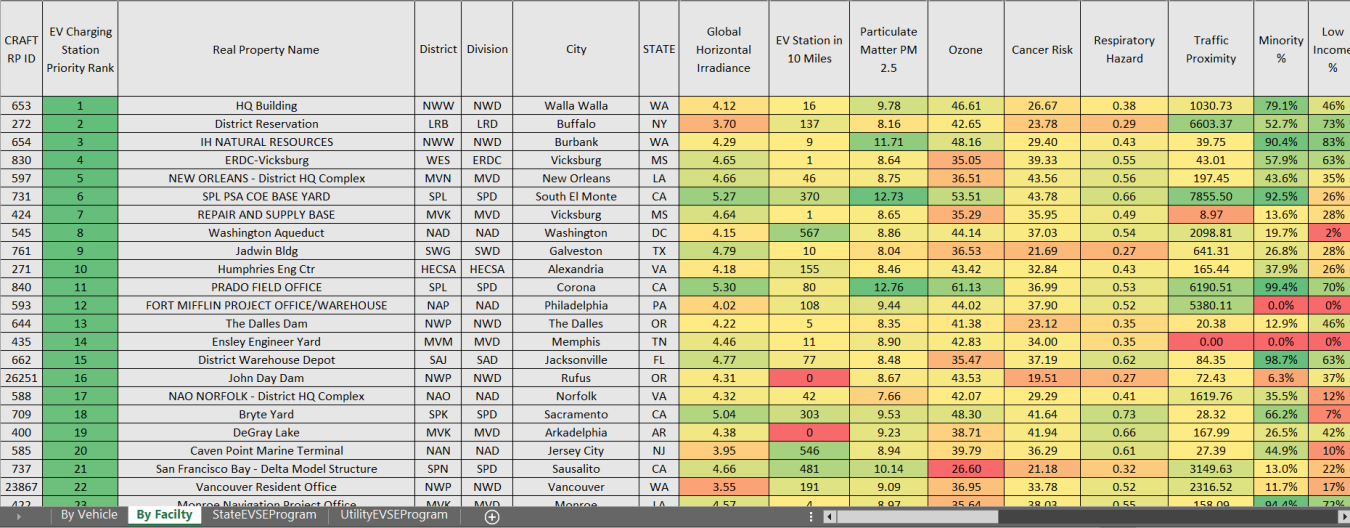The U.S. Army Corps of Engineers (USACE) has implemented a comprehensive assessment to prioritize electric vehicle (EV) charging stations projects. In addition to considering vehicle locations, USACE developed a site prioritization tool that accounts for various factors such as emissions, energy costs, access to public charging, and environmental justice concerns.
"The tool helps to prioritize project locations that will have the highest impact on the communities where our facilities reside. USACE is pleased to share this tool with other federal agencies, enabling them to make their charging station deployments more impactful as well."
These factors help determine the projects that will have the greatest impact on achieving USACE's goals, including a 100% transition to zero-emission vehicle (ZEV) acquisitions, reduction of facility emissions, and integration of environmental justice principles into planning. By prioritizing project locations, USACE can effectively electrify vehicles in areas where multiple metrics align with the agency's goals.
USACE evaluates each vehicle and facility based on specific metrics including vehicle attributes, average mileage, costs, and location data supplemented by environmental justice data from the Environmental Protection Agency (EPA), such as particulate matter, ozone pollution, cancer risk, and EPA Non-Attainment Zone classification. The tool combines this data with demographics and statistics to determine the optimal facility location.
Request the Tool
Contact FEMP for access to the USACE site prioritization tool.
Product developer Jay Plucker prioritizes these metrics according to the following ratios:
- Vehicle age use (20%)
- Public charging availability (15%)
- Solar charging potential (5%)
- Emissions – grid and vehicle (15%)
- Financial incentives (15%)
- Economies of scale (15%)
- Environmental justice (7.5%)
- Hub zone status (7.5%)

A screenshot of the USACE site prioritization tool's Facility ranking tab.

